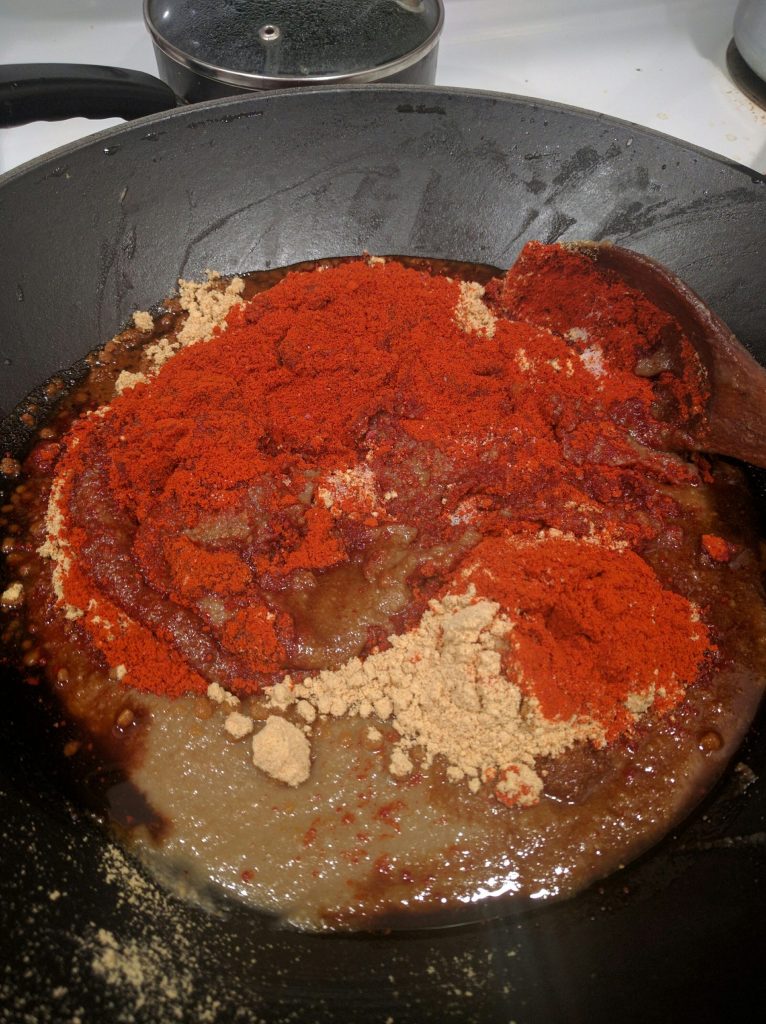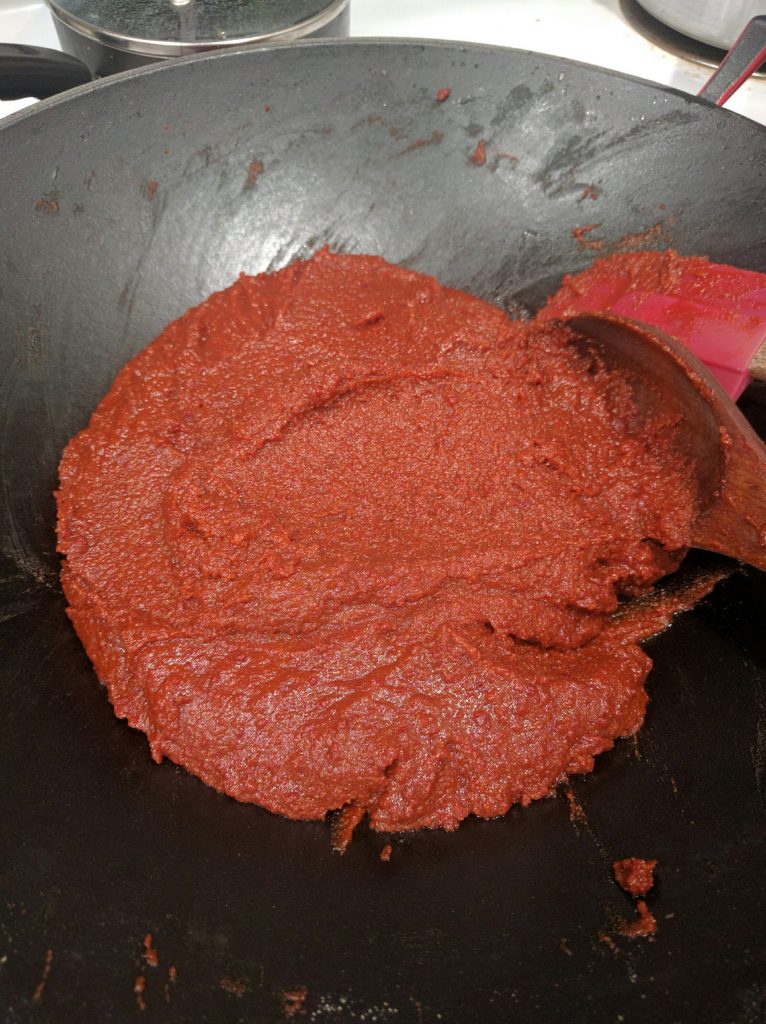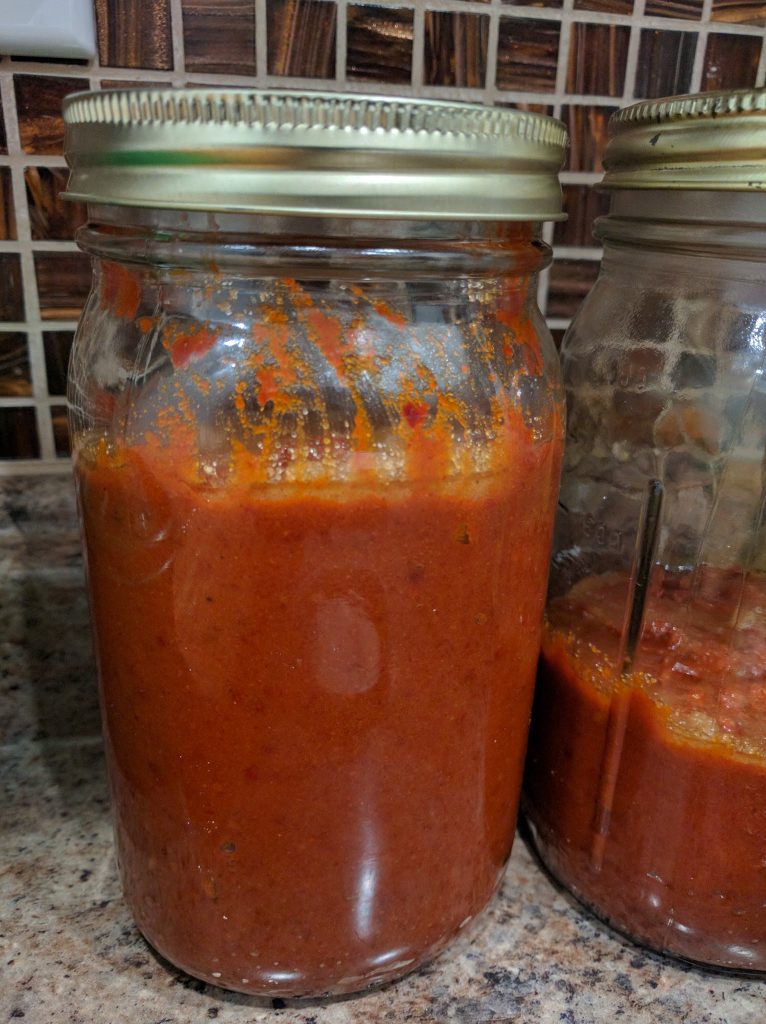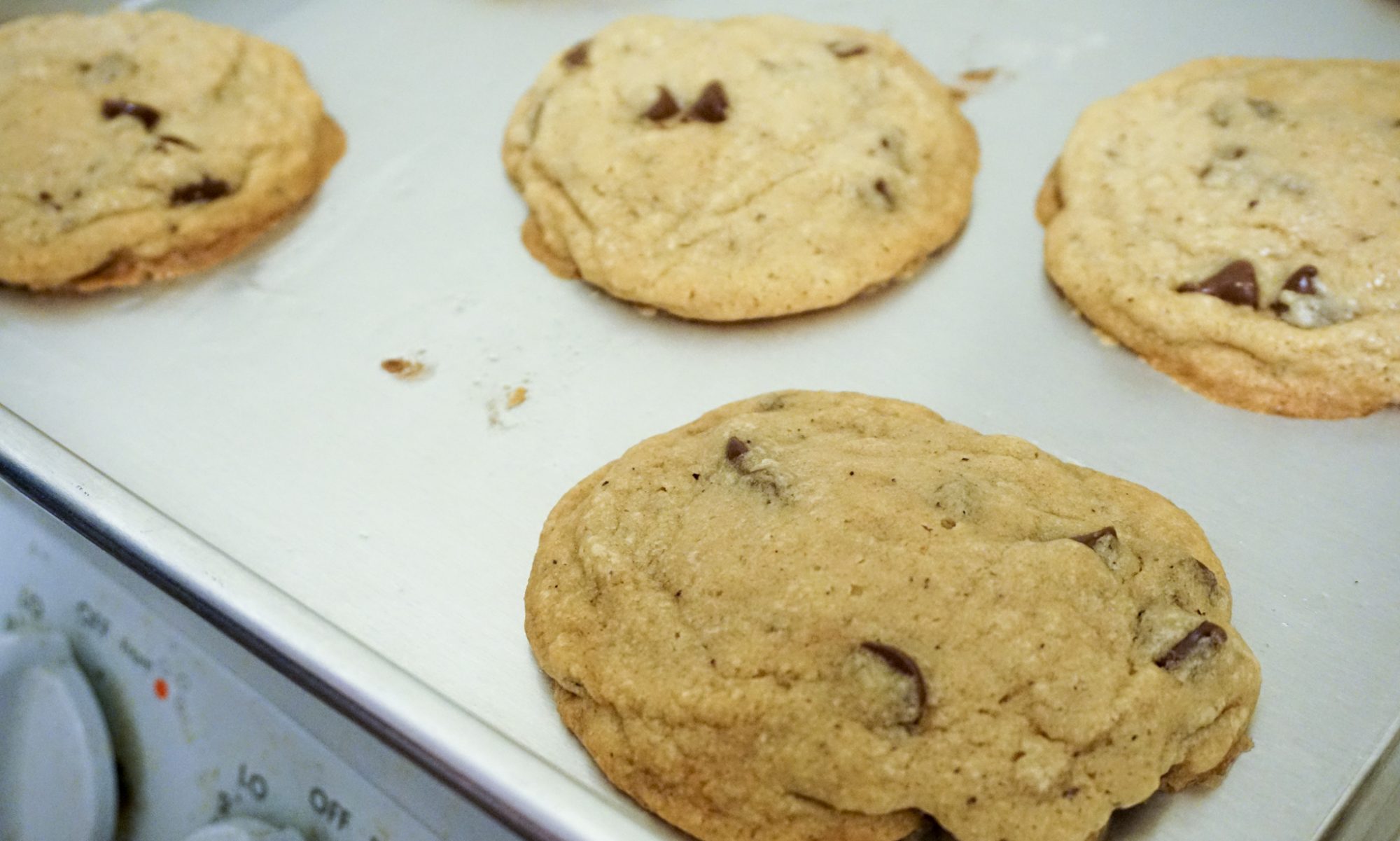There aren’t a lot of gochujang recipes online (in English). They don’t explain what you’re doing and why you’re doing it, so it’s hard to tell if it’s working. Because gochujang takes several months to ferment, I wanted to be extra sure that it would work. So I combined three different recipes with some advice from the beer-brewing community. Of course I started with Maangchi’s recipe, but I also consulted this video and Eating Korean. I’ll give you the recipe I ended up using, with some explanation at the end of what we’re doing.



Gochujang (makes 5 cups)
1 1/2 cups fine barley malt powder (yeotgireum) or diastatic malt powder
Water
2 cups sweet rice flour (Or whole glutinous rice. I don’t know how much is needed.)
2 cups red chili powder
1 cup fine soybean malt powder (mejugaru)
1/2 cup soy sauce
1/2 cup coarse salt
- Boil the rice flour in ~4 cups water until glossy and thickened. Or if using whole sweet rice, cook with enough water to make a porridge. Let cool until warm.
- Stir barley malt powder into ~4 cups water. Let sit for a while (an hour or two), until the powder has settled out and the liquid is a clear yellowish color. Pour the clear liquid into a pot with the rice mixture. Avoid adding the settled barley malt powder; it will give your gochujang a powdery, grainy texture. Let the barley malt-rice mixture sit for several hours, up to overnight. After resting, it should taste lightly sweet.
- Skip this step if using whole rice. Otherwise, boil the barley malt-rice mixture until reduced in volume by two-thirds. You should have about 3 cups of liquid (dare I say “goop”?).
- Mix the chili powder, soybean powder, soy sauce, and half the salt with the barley malt-rice mixture. Transfer the chili mixture to a jar or a clay pot, leaving some room for the paste to rise as it ferments. Sprinkle the remaining salt on top of the paste.
- Cover with cheesecloth or some other breathable fabric. Place in direct sun every day, and cover at night. Let the gochujang mature for at least 1-6 months and for up to 5 years (!). Afterward, keep in a cool place, like your fridge.
What we’re doing
- Cooking the rice gelatinizes the starch, allowing it to be more quickly converted to simple sugars. This is a common step in brewing.
- Barley malt contains amylases, enzymes that break complex starches, like those found in rice, down into simple sugars, like glucose. The simple sugars act as food for the microorganisms that we want to ferment the gochujang. This process can also be used to make rice syrup.
- I’m not sure why the barley malt-rice mixture is boiled. It reduces the amount of water in the gochujang, so it has something to do with texture. But it also denatures the amylases in the barley malt, so it stops starch digestion from continuing. I don’t know why this is important, but this step is included in two of the three recipes I looked at.
- I’m not sure what the soybean malt powder is for. Some people say that it contains the microorganisms we want to ferment the gochujang; some people say the microorganisms come from the air and the soybean powder provides them with protein. I dunno, maybe you could get by without this, or replace it with some other type of bean. The salt on top retards the growth of mold.
- The fabric keeps bugs out. Sunlight also retards the growth of mold. How long you let the gochujang ferment depends on if you used whole rice or rice flour. You should let gochujang made with whole rice ferment at least 6 months; with rice flour, only 1-3 months. This is because mechanical processing, like grinding into flour, is a type of digestion. Being in smaller pieces makes it easier for the barley malt enzymes to reach all of the starch in the rice more quickly.
Enjoy! Let me know how your gochujang turns out!
